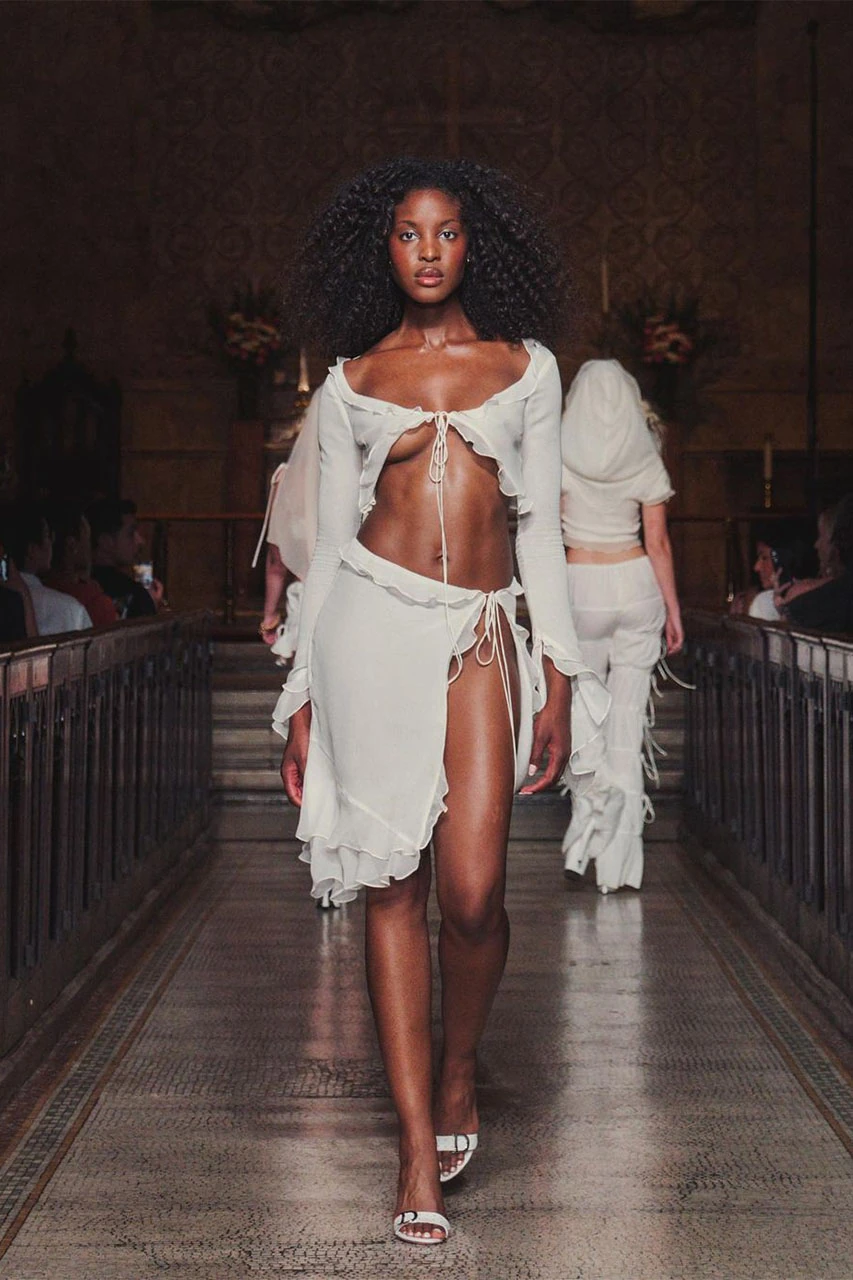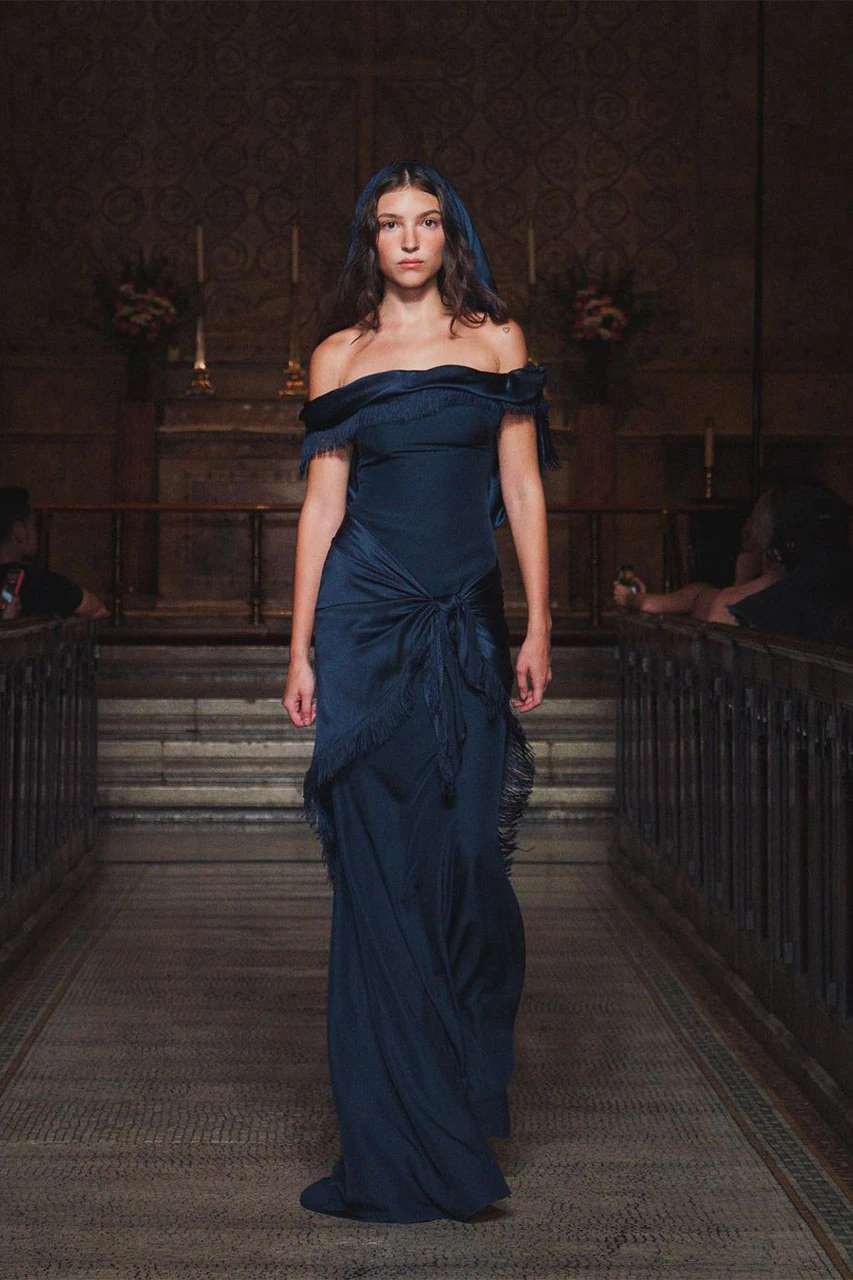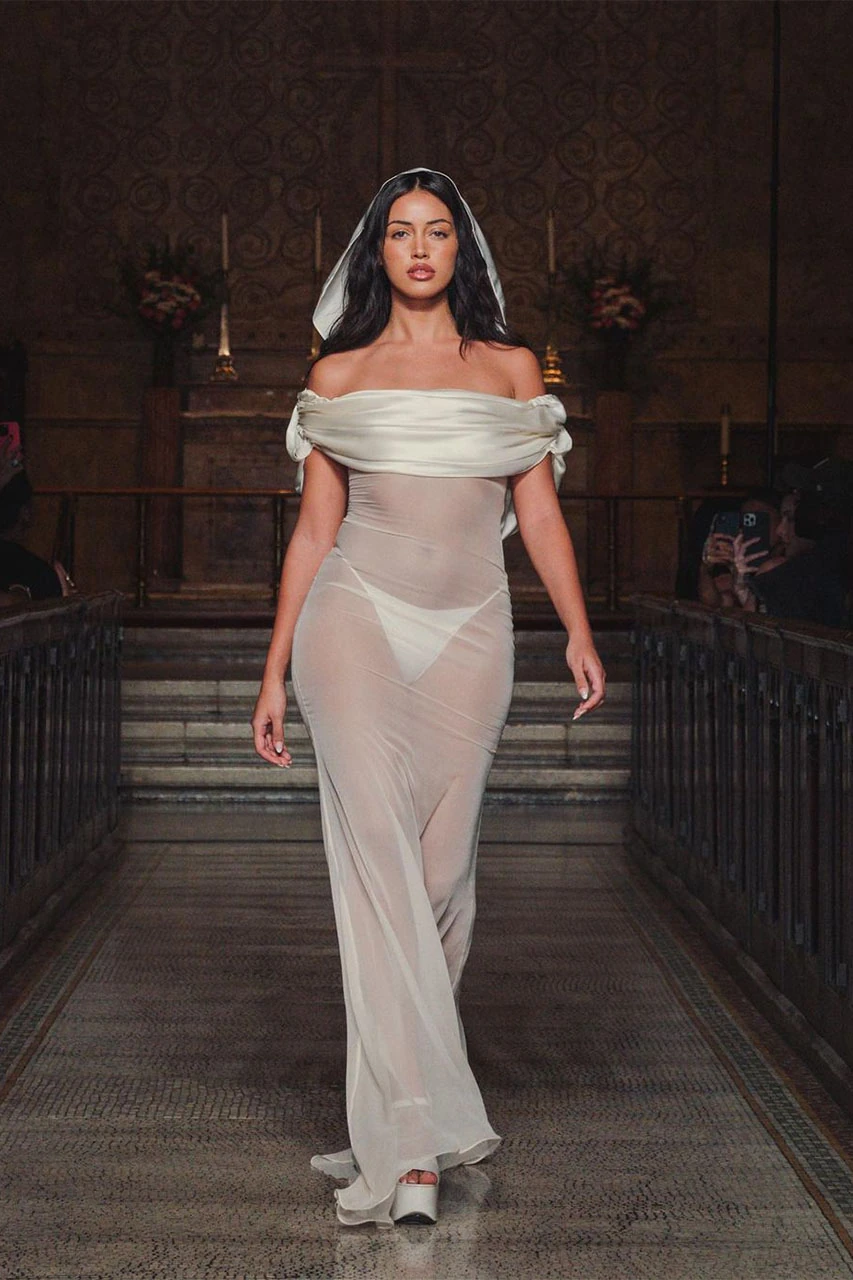From Catholic-Mexican Girl to Latina Fairy: An Analysis of Cultural Aesthetics
- Denise Casalez
- Oct 14, 2023
- 4 min read
Birth From resistance through fashion to self-reflection and expression, fashion trends are a staple for individuals, cultures and communities. When you walk down the street, what someone wears speaks out about their own individuality and power on how they see themselves. However, some overarching themes and influences have originated from all kinds of roots and cultures which makes them even more iconic. In recognition of Hispanic Heritage Month, let’s highlight some popular trends that can trace their roots to Hispanic culture. The iconic off-shoulder look, saddle bags to boleros to finish a promising outfit and a personal favorite of mine, cowboy boots (pair it with a white lace dress and you get the perfect summer outfit). But where do you draw the line between participating in a trend and appropriating a culture?

The Virgin, the Princess, and the Siren
One of TikTok’s hottest fashion trends right now? “Catholic-Mexican Girl” or “Latina Fairy” aesthetic. The “Catholic-Mexican girl” aesthetic revolves around Mexican Catholicism featuring details like crucifix ribbon necklaces, white veils, white ruffle-pattern skirts and red accents to showcase this tradition. Latinx fashion often incorporates cultural symbols and motifs, especially connecting their fashion with religion.
This style modernizes Catholicism within these fashion pieces and expresses it more with art. Mirror Palais Spring Summer 2023 highlights the symbolism of this trend. Brazilian fashion designer Marcelo Gaia showcased his Catholic upbringing by hosting his fashion show at the Church of Ascension. However, he received some backlash from the religious community on whether or not it was appropriate to host a fashion show there. Nonetheless, models made their way down the runway in Old-World religious references that highlighted each silhouette —black lace, white veil, corsets, the headpiece of a nun’s coif.
On an Instagram reel that captured over three million views, we can see the model by the name of “ThreeMillion” posing in various religious sacraments. The Virgin, The Princess, & The Siren.
The Blueprint and Culture
“Latina Fairy” style is the same as “Mexican Catholic girl.” The only difference is the title, so why is the internet making a new set of names that fall under the same category? The answer is simple. Some want to claim the style as if they discovered something profound and new. This isn’t the first time that Latinx trends have fallen under an unnecessary title. This year, some TikToks have been called into question by the Hispanic community regarding the recoining of agua fresca as “Spa Water” or esquites as “Mexican Corn Dip” and ceviche or salsa as “Cowboy Caviar.” Let’s be honest, why do we need another title when it already has one? It’s significant that people recognize the blueprint.
Artists, like Bad Bunny and Rosalía, have impacted the music industry and left their mark on fashion, inspiring fans to adopt their distinctive styles. With this impact, there's been a growing movement towards gender-fluid and inclusive fashion within the community, with a focus on breaking down traditional gender norms and embracing diverse expressions of identity. Bad Bunny busts out in crop tops, skirts and feminine pieces that break social norms within Latinx culture.
Streetwear has been a prominent trend in Latinx fashion, especially in urban areas like Brooklyn, Los Angeles, etc. But it often blends elements of hip-hop culture with Latinx influences, resulting in bringing and recognizing Black culture.
Hoops, low-rise jeans and what we call ‘90s fashion today resulted from Black and Latinx culture. It’s praised when a white celebrity participates in that fashion trend, but once a POC participates in it, it brings a different type of attention. “Hot Cheeto girls” are a primary target of how standards are different towards white and non-white communities. This stereotype targets both Black and Latina women and they are deemed to be “ghetto, ratchet, unprofessional” just based on the way they are dressed. Why do POC communities get bashed for it while on the other hand non-POC get praised?
Local Latinx Fashion
The Appalachian Apparel Association at Appalachian State University recently presented a fashion literacy series where they discussed the celebrations of the contributions of Latinx fashion creators in recognition of Hispanic Heritage Month. They discussed iconic Latinx fashion designers, like how the eyes are on the workers who are putting in the work to make the garments while these people are usually undocumented or from indigenous communities. These creators were exploited and missing from the credit industry therefore, while these designers are making lots of money, there are a lot of people who still need to be heard. The United States is home to so many different groups of people, multiracial and multilingual people that also get erased in this photograph.
“While we wanted to do this presentation to just celebrate that fashion for years in the industry, it's still really important to recognize all but like colorist success and economic barriers that still exist in that industry,” Jaidyn Toomey, Vice President of the Apparel Association, said.
“This series in general is to spread awareness and educate people about these issues so we can do something about it,” she said.








Comments